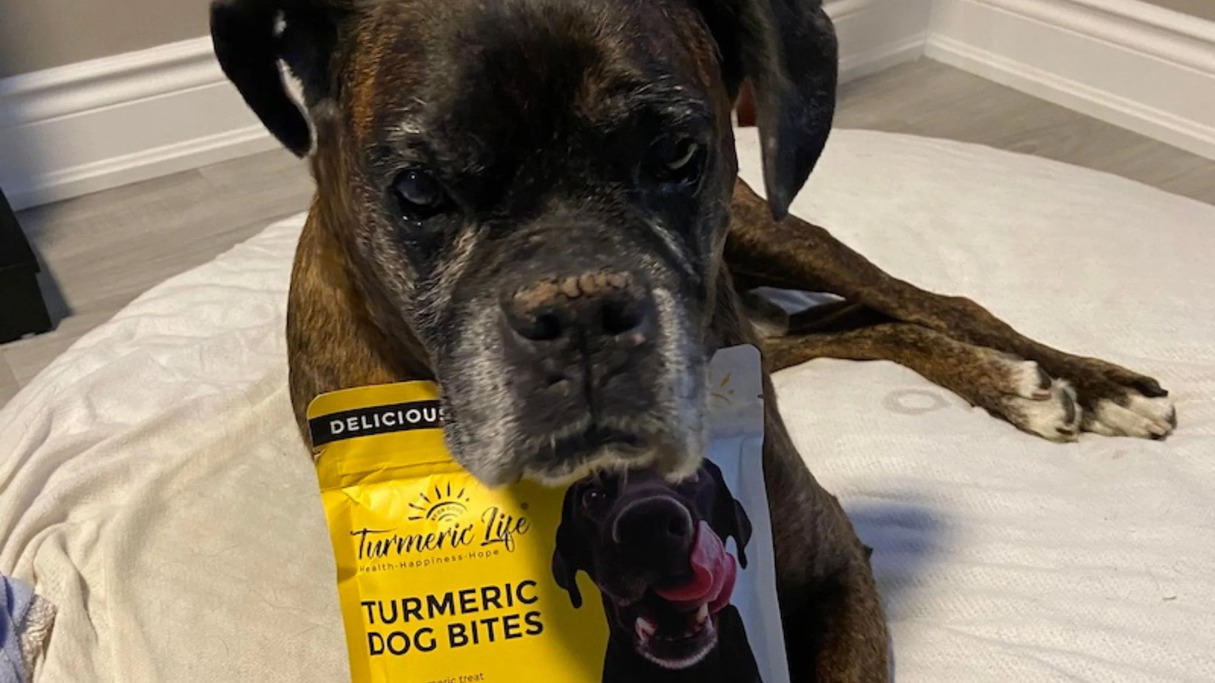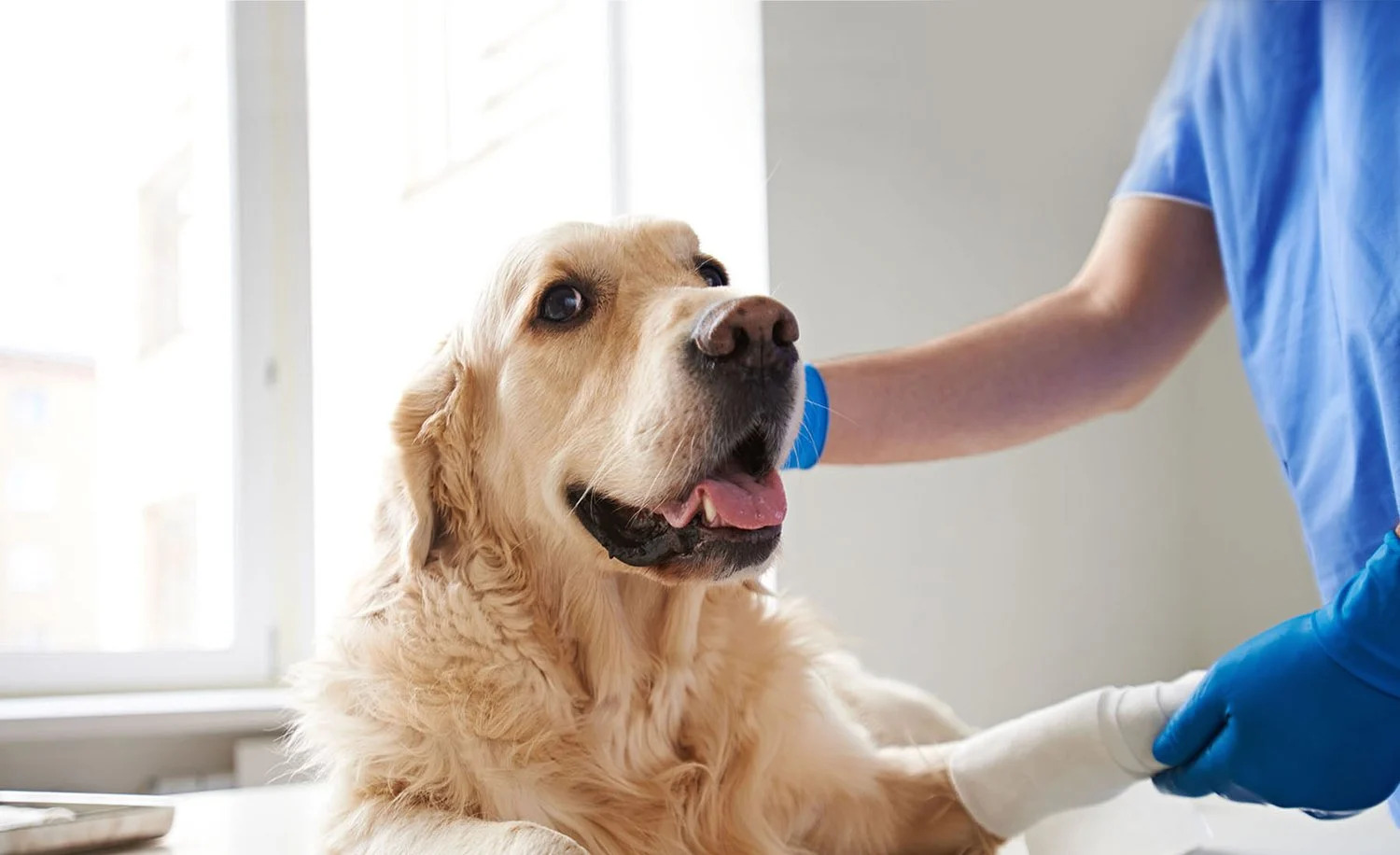Home>Health & Wellness>Common Health Issues>How Much Tramadol For Dog Cancer


Common Health Issues
How Much Tramadol For Dog Cancer
Published: February 4, 2024
Learn about common health issues in dogs, including how much tramadol to use for dog cancer. Find expert advice and guidance here.
(Many of the links in this article redirect to a specific reviewed product. Your purchase of these products through affiliate links helps to generate commission for Pawsomeoldies.com, at no extra cost. Learn more)
Table of Contents
Introduction
When a beloved furry friend is diagnosed with cancer, pet owners are often faced with a myriad of emotions and a strong desire to alleviate their pet's discomfort. In such challenging times, it's crucial to seek out reliable information and guidance to ensure the best possible care for the furry family member. One medication that may come into consideration for managing cancer-related pain in dogs is tramadol.
Tramadol, a synthetic opioid, is commonly prescribed for pain management in both humans and dogs. Its effectiveness in alleviating moderate to severe pain has made it a popular choice among veterinarians for treating various conditions, including cancer-related discomfort in dogs. However, determining the appropriate dosage and understanding the potential side effects are essential aspects that pet owners need to consider when using tramadol for their canine companions.
In this comprehensive guide, we will delve into the specifics of tramadol usage for dogs with cancer. From understanding the medication's mechanism of action to exploring the recommended dosage and potential risks, pet owners will gain valuable insights into how tramadol can be a part of their pet's cancer management plan. Additionally, we will emphasize the importance of consulting with a veterinarian to ensure the safe and effective use of tramadol for dogs with cancer.
By the end of this guide, pet owners will be equipped with the knowledge needed to make informed decisions about incorporating tramadol into their dog's cancer care regimen. Let's embark on this informative journey to understand how tramadol can play a role in enhancing the quality of life for dogs battling cancer.
Understanding Tramadol and its Use in Dogs
Tramadol, a centrally acting synthetic opioid, is classified as a Schedule IV controlled substance due to its potential for abuse and addiction in humans. However, when used responsibly and under veterinary supervision, tramadol can be a valuable tool in managing pain in dogs, including those suffering from cancer.
The mechanism of action of tramadol involves binding to mu-opioid receptors in the brain and inhibiting the reuptake of serotonin and norepinephrine. This dual action contributes to its analgesic properties, making it effective in alleviating moderate to severe pain in dogs.
In the context of cancer management, tramadol can play a crucial role in improving the quality of life for dogs experiencing cancer-related discomfort. Whether it's post-surgical pain, musculoskeletal pain, or pain associated with tumor growth, tramadol can provide relief and enhance the overall well-being of canine cancer patients.
It's important to note that tramadol should only be used in dogs under the guidance of a veterinarian. The dosage and frequency of administration must be carefully determined based on the dog's specific condition, overall health, and potential interactions with other medications. Additionally, pet owners should be vigilant in monitoring their dog's response to tramadol and report any concerning symptoms to the veterinarian promptly.
Understanding the appropriate use of tramadol in dogs involves recognizing the potential side effects and risks associated with its administration. While tramadol is generally well-tolerated in dogs when used as directed, it's essential to be aware of possible adverse reactions, such as sedation, gastrointestinal upset, and changes in behavior. By staying informed and observant, pet owners can ensure the safe and responsible use of tramadol for their canine companions.
In summary, tramadol serves as a valuable analgesic option for dogs with cancer, offering a means to manage pain and improve their quality of life. When integrated into a comprehensive cancer care plan, tramadol can contribute to alleviating discomfort and promoting the well-being of dogs facing the challenges of cancer.
Tramadol Dosage for Dogs with Cancer
Determining the appropriate dosage of tramadol for dogs with cancer is a critical aspect of their pain management plan. The dosage prescribed by a veterinarian takes into account various factors, including the dog's weight, overall health, and the severity of the cancer-related pain. It's important to emphasize that the dosage guidelines provided here are for informational purposes only, and pet owners should always follow the specific recommendations provided by their veterinarian.
In general, the typical starting dosage of tramadol for dogs is 1-2 mg per pound of the dog's body weight, administered every 8-12 hours. For dogs with cancer, the dosage may be adjusted based on the individual response to the medication and any concurrent treatments being administered. It's crucial for pet owners to adhere to the prescribed dosage and not exceed the recommended frequency of administration, as this can lead to adverse effects and potential toxicity.
When initiating tramadol therapy for a dog with cancer, veterinarians may start with the lower end of the dosage range and gradually increase it based on the dog's response. This approach allows for careful monitoring of the dog's tolerance to the medication and the effectiveness of pain relief. Additionally, the veterinarian may consider combining tramadol with other pain management strategies to optimize the dog's comfort and well-being.
It's important for pet owners to maintain open communication with their veterinarian regarding any changes in their dog's condition or response to tramadol. This includes reporting any signs of discomfort or adverse effects, as well as discussing the need for potential dosage adjustments. By actively participating in the monitoring process, pet owners can contribute to ensuring that their dog receives the most effective and safe pain management regimen.
In summary, the appropriate dosage of tramadol for dogs with cancer is determined based on individual factors and should be carefully prescribed and monitored by a veterinarian. By following the recommended dosage guidelines and staying attentive to their dog's well-being, pet owners can play a crucial role in supporting their canine companion through the challenges of cancer-related pain.
Potential Side Effects and Risks
While tramadol can be an effective tool for managing pain in dogs with cancer, it's essential for pet owners to be aware of the potential side effects and risks associated with its use. Understanding these factors is crucial for ensuring the safe and responsible administration of tramadol to canine cancer patients.
One of the primary considerations when using tramadol in dogs is the potential for gastrointestinal upset. Dogs may experience symptoms such as nausea, vomiting, diarrhea, or decreased appetite when taking tramadol. These gastrointestinal disturbances can impact the dog's overall well-being and may require adjustments to the dosage or administration schedule. It's important for pet owners to monitor their dog's digestive health closely and promptly report any concerning symptoms to the veterinarian.
Additionally, tramadol can have central nervous system effects, leading to sedation or changes in behavior in some dogs. While mild sedation can contribute to the dog's comfort, excessive drowsiness or unusual behavioral changes should be promptly addressed by consulting with the veterinarian. Monitoring the dog's alertness and responsiveness while on tramadol is essential for identifying and managing any potential central nervous system effects.
Another aspect to consider is the potential for allergic reactions to tramadol in some dogs. Allergic responses can manifest as skin rashes, itching, hives, or more severe symptoms such as difficulty breathing. Pet owners should be vigilant in observing their dog for any signs of allergic reactions and seek immediate veterinary attention if such symptoms occur.
Furthermore, as with any medication, there is a risk of drug interactions when tramadol is administered alongside other medications. It's crucial for pet owners to provide a comprehensive list of all medications, supplements, and treatments their dog is receiving to the veterinarian. This allows the veterinarian to assess the potential for interactions and make informed decisions regarding the safe use of tramadol in conjunction with other therapies.
Lastly, it's important to recognize that prolonged or excessive use of tramadol can lead to the development of tolerance and physical dependence in some dogs. This underscores the significance of adhering to the prescribed dosage and administration schedule, as well as closely monitoring the dog's response to the medication. Abrupt discontinuation of tramadol can also lead to withdrawal symptoms in dogs, highlighting the need for a gradual tapering of the medication under veterinary guidance if the need arises.
In summary, while tramadol can offer valuable pain relief for dogs with cancer, pet owners should be mindful of the potential side effects and risks associated with its use. By staying informed, closely monitoring their dog's well-being, and maintaining open communication with the veterinarian, pet owners can navigate the challenges and ensure the safe and effective use of tramadol as part of their dog's cancer management plan.
Consulting with a Veterinarian
When considering the use of tramadol for a dog with cancer, consulting with a veterinarian is an essential step in ensuring the safe and effective management of the dog's pain. Veterinarians play a pivotal role in assessing the dog's condition, determining the appropriate treatment plan, and providing guidance to pet owners throughout the process.
The consultation with a veterinarian begins with a comprehensive evaluation of the dog's health status, including the specific details of the cancer diagnosis and the associated pain symptoms. This assessment allows the veterinarian to gain a thorough understanding of the dog's needs and tailor the pain management approach accordingly. By sharing pertinent information about the dog's medical history, ongoing treatments, and any previous adverse reactions to medications, pet owners enable the veterinarian to make well-informed decisions regarding the use of tramadol.
During the consultation, the veterinarian will discuss the potential benefits and risks of using tramadol for the dog's cancer-related pain. This dialogue provides an opportunity for pet owners to ask questions, express any concerns, and gain a deeper understanding of how tramadol can contribute to their dog's comfort and well-being. Additionally, the veterinarian will outline the specific dosage guidelines, administration instructions, and potential signs of adverse effects that pet owners should be attentive to while their dog is on tramadol.
Furthermore, the consultation with a veterinarian extends beyond the initial prescription of tramadol. It involves ongoing communication and collaboration to monitor the dog's response to the medication, assess any changes in the pain level, and address any emerging concerns. This proactive approach allows the veterinarian to make timely adjustments to the treatment plan, such as modifying the dosage or incorporating complementary pain management strategies, to optimize the dog's comfort and quality of life.
In the context of tramadol usage, veterinarians also play a crucial role in educating pet owners about responsible medication administration and the importance of adherence to the prescribed regimen. This guidance encompasses aspects such as proper dosing, the significance of regular veterinary check-ups, and the safe storage of tramadol to prevent accidental ingestion by the dog.
Ultimately, consulting with a veterinarian is a cornerstone of responsible pet care, especially when navigating the complexities of managing cancer-related pain in dogs. The expertise, guidance, and ongoing support provided by veterinarians empower pet owners to make informed decisions and ensure the well-being of their canine companions throughout the cancer management journey. By fostering a collaborative relationship with the veterinarian, pet owners can navigate the challenges of using tramadol for their dog's cancer-related pain with confidence and compassion.
Read more: How Much Turmeric For A Dog With Cancer
Conclusion
In conclusion, the use of tramadol for managing cancer-related pain in dogs represents a valuable option for improving the quality of life and comfort of canine cancer patients. Through its analgesic properties and potential to alleviate moderate to severe pain, tramadol serves as a supportive tool in the comprehensive care of dogs facing the challenges of cancer.
The appropriate use of tramadol in dogs with cancer hinges on a thorough understanding of the medication, including its mechanism of action, dosage guidelines, and potential side effects. Pet owners play a crucial role in ensuring the responsible administration of tramadol to their canine companions, guided by the expertise and support of veterinarians.
By consulting with a veterinarian, pet owners can gain insights into the specific needs of their dog, receive tailored guidance on tramadol usage, and establish a collaborative approach to monitoring the dog's response to the medication. This partnership with the veterinarian fosters a proactive and informed stance in managing cancer-related pain, ultimately contributing to the well-being and comfort of the canine patient.
It is essential for pet owners to remain vigilant in observing their dog for any signs of adverse effects or changes in behavior while on tramadol. Open communication with the veterinarian, coupled with a commitment to adhering to the prescribed dosage and administration schedule, forms the cornerstone of responsible tramadol usage in dogs with cancer.
As pet owners navigate the complexities of caring for a dog with cancer, the integration of tramadol into the pain management plan underscores the dedication to enhancing the dog's comfort and quality of life. By staying informed, actively engaging with the veterinarian, and prioritizing the well-being of their canine companion, pet owners can navigate the challenges of cancer-related pain with compassion and diligence.
In essence, the use of tramadol for dogs with cancer embodies a commitment to providing supportive care and addressing the pain and discomfort associated with the disease. Through responsible medication administration, ongoing veterinary collaboration, and a steadfast focus on the dog's well-being, pet owners can make a meaningful difference in their canine companion's journey through cancer, fostering comfort, compassion, and a high quality of life.














